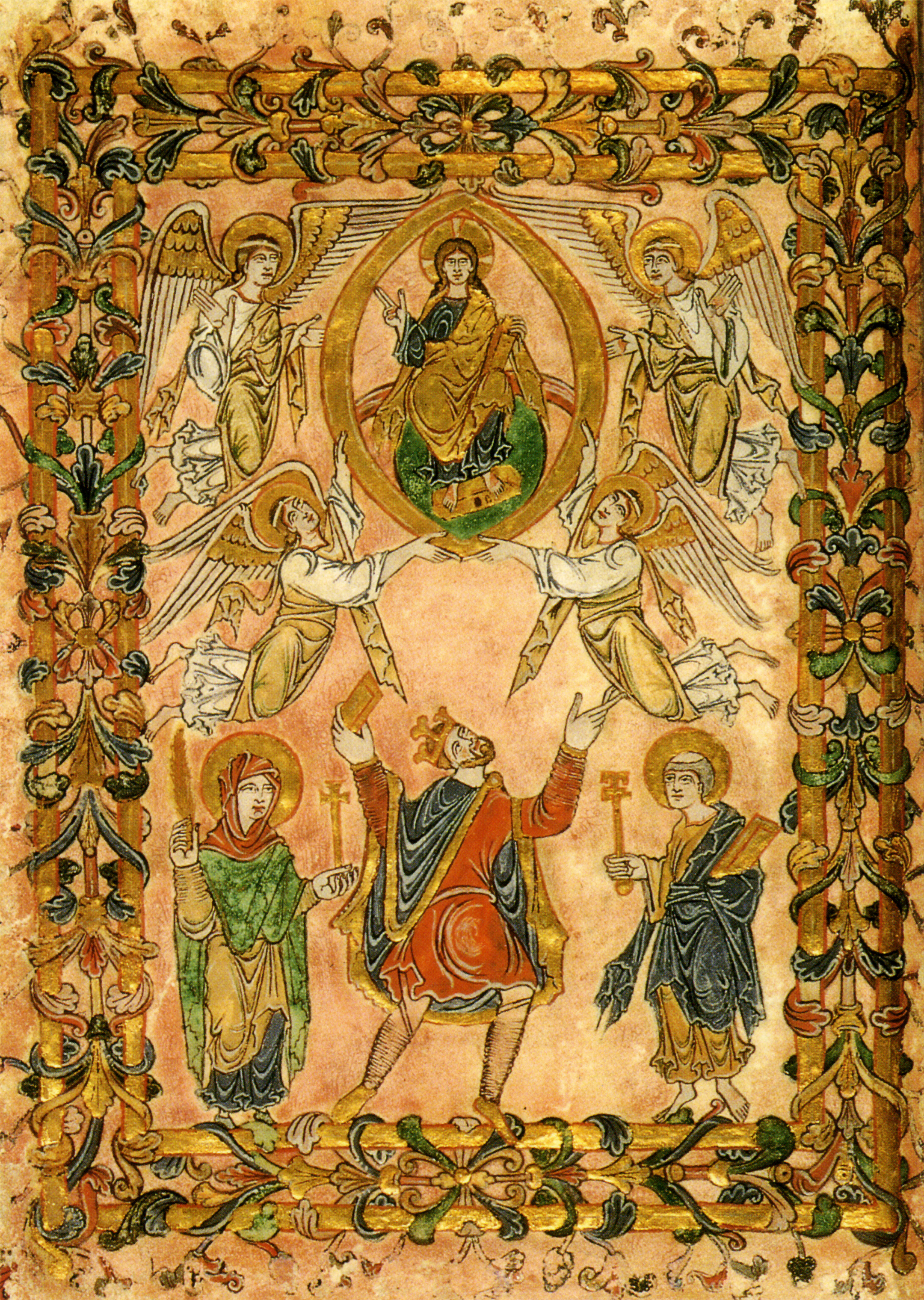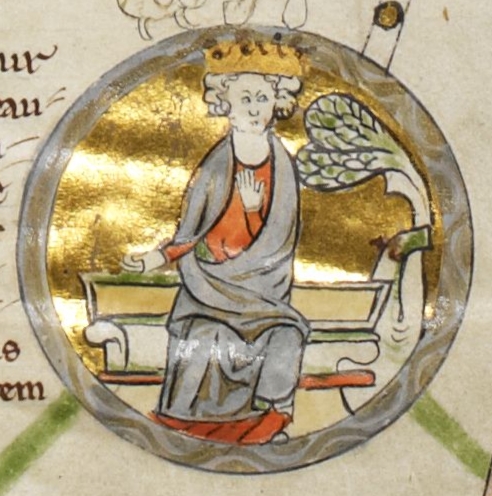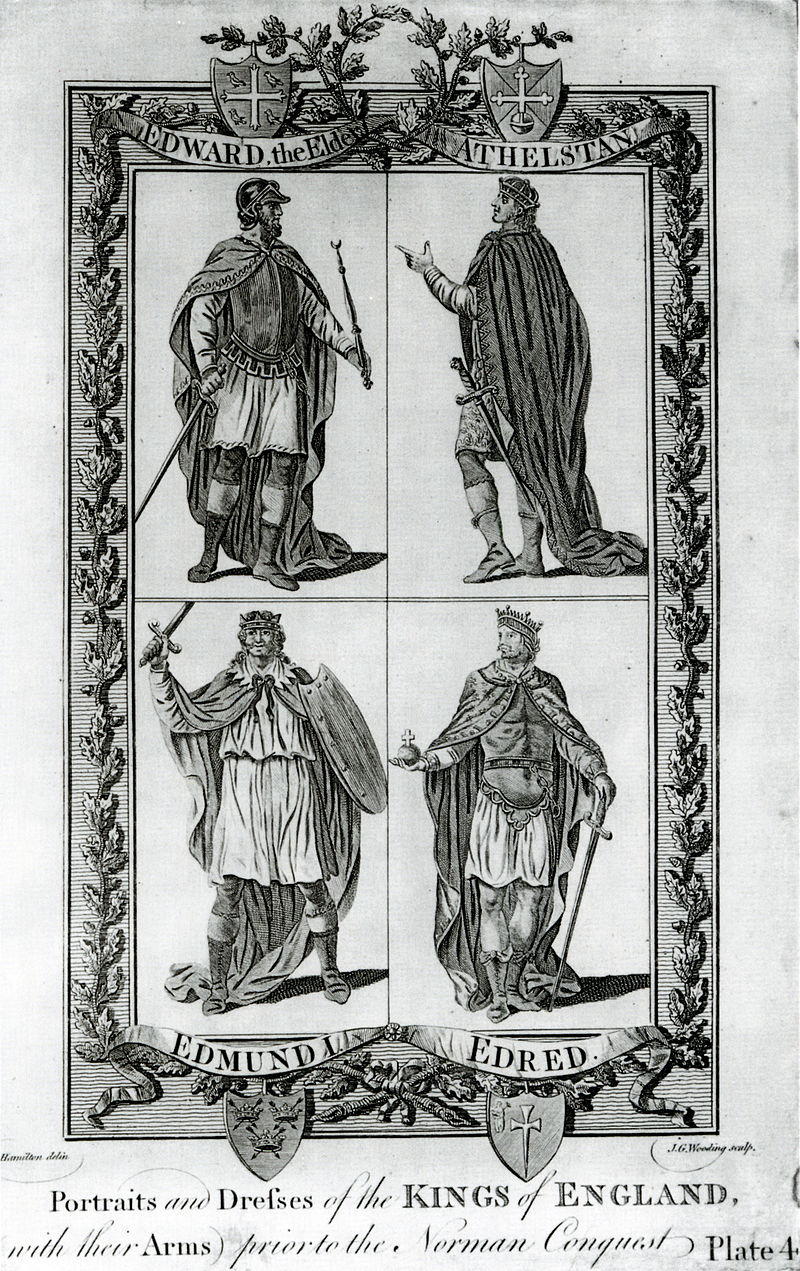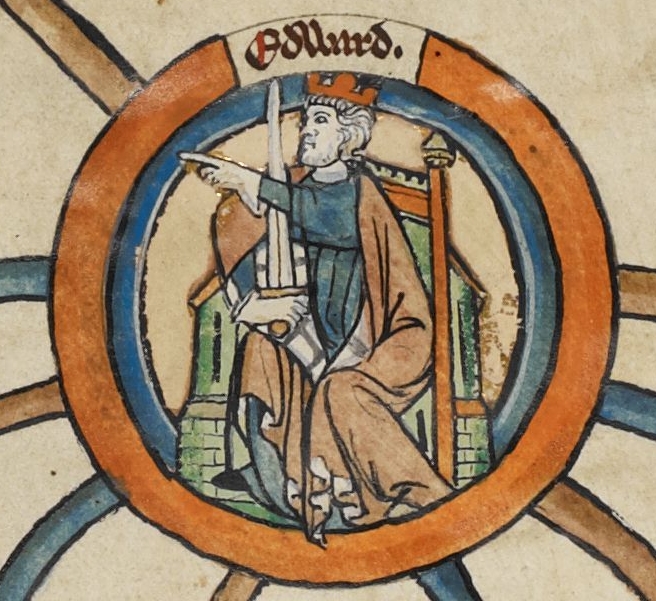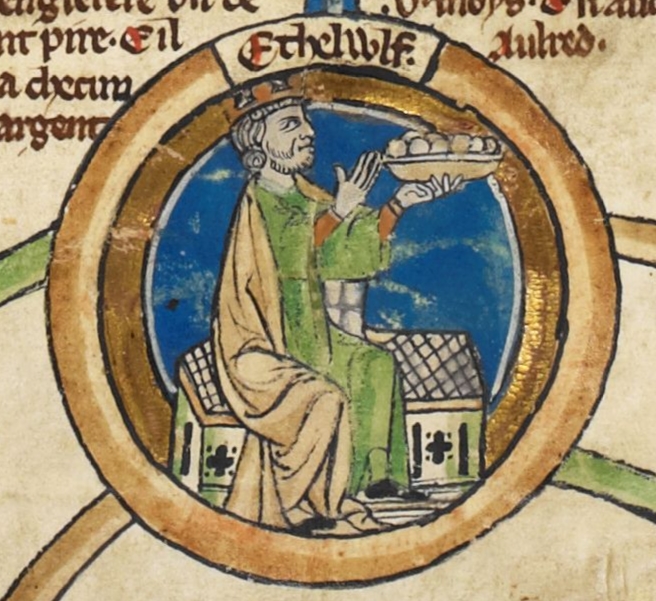by Susan Flantzer © Unofficial Royalty 2019

Credit – Wikipedia
Edward the Martyr was the eldest son of Edgar the Peaceful, King of the English. He was born around 962 to Æthelflæd who possibly was a nun at Wilton Abbey, a Benedictine abbey in Wiltshire, England, whom Edgar seduced. It is unclear whether Æthelflæd and Edgar married.
Edward had a half-sister through his father’s relationship with Saint Wulfthryth, a noblewoman who may have been abducted from Wilton Abbey by Edgar. Bride abduction was a traditional part of Anglo-Saxon society but whether Edgar took Wulfthryth by force is not known. It is also uncertain whether Edgar married Wulfthryth. Eventually, Wulfthryth and her daughter Edith returned to Wilton Abbey where Wulfthryth later became the Abbess and Edith became a nun.
- Saint Edith of Wilton (circa 963 – 986), a nun at Wilton Abbey
Edward had two half-brothers through his father’s marriage to Ælfthryth, daughter of Ealdorman Ordgar of Devon:
- Edmund (circa 966 – 970 or 971), died in early childhood
- Æthelred II the Unready, King of the English (circa 968 – 1016), married (1) Ælfgifu of York, had at least eleven children including Edmund II Ironside, King of the English (2) Emma of Normandy, had three children including Edward the Confessor, King of England
In 975, King Edgar died and leaving his two surviving sons: Edward around 13 years of age, and Æthelred around 7 years old. Various nobles and clergy formed factions that supported each of the brothers’ succession to the throne. Both boys were too young to have played any significant role in the political maneuvering, and so it was the brothers’ supporters who were responsible for the turmoil which accompanied the choice of a successor to the throne. In the end, Edward’s supporters, mainly Saint Dunstan, Archbishop of Canterbury and Oswald of Worcester, Archbishop of York, proved more powerful and persuasive, and he was crowned king before the year was out.

King Edward the Martyr; Credit – Wikipedia
During Edward’s short reign, his kingdom was plagued with famine and violent attacks on monasteries by nobles who wanted to reclaim the land that King Edgar had given to the monks. Many monasteries were destroyed and the monks had to flee. The teenage Edward was famous for temper tantrums and insulting influential people due to his lack of diplomatic behavior.
Edward’s reign was short-lived. On March 18, 978, Edward arrived at a hunting lodge probably at or near the mound on which the ruins of Corfe Castle now stand. Aelfthryth, his stepmother, had invited Edward there and she arranged for him to be welcomed with a cup of wine. As Edward drank the wine, he was stabbed in the back while still mounted on his horse. He fell off, but his foot caught in the stirrup and he was dragged to his death. Although Edward’s ten-year-old half-brother Æthelred was not personally suspected of participation in the plot, the specter of his half-brother’s murder hung over him for the rest of his life.

A Victorian-era depiction of Ælfthryth putting her plan of murdering Edward the Martyr into motion; Credit – Wikipedia
Edward was first buried at St. Mary’s Church in Wareham, Dorset, England. In reality, people probably did not miss Edward because of his uncouth behavior. However, people were soon saying miracles occurred at his burial place and he was declared a saint and a martyr. Edward is recognized as a saint in the Eastern Orthodox Church, the Roman Catholic Church, and the Anglican Church, and is known as Saint Edward the Martyr.
In 981, Edward’s remains were moved to Shaftesbury Abbey, a convent founded by his great-great-grandfather Alfred the Great, and were buried there with great pomp under the supervision of Saint Dunstan, Archbishop of Canterbury. Many miracles were claimed to occur at the tomb of Saint Edward, including the healing of lepers and the blind. The abbey became the wealthiest Benedictine convent in England and a major pilgrimage site.
In 1539, Edward’s remains were hidden to avoid desecration during the Dissolution of the Monasteries during the reign of King Henry VIII. In 1931, some remains were recovered by J.E. Wilson-Claridge during an archaeological excavation of Shaftesbury Abbey. Their identity was confirmed by Dr. T.E.A. Stowell, an osteologist, who said the remains were those of a young man of about 20 who had injuries that corresponded to a person being dragged backward over the pommel of a saddle and having their leg twisted in a stirrup.
In 1970, another examination performed on the remains suggested that death had been caused by the manner in which Edward supposedly had died. However, a later examination showed the remains to be from the same time period as Edward but that they belonged to a man in his late twenties or early thirties rather than a youth in his mid-teens. Nevertheless, Wilson-Claridge donated the remains to the Russian Orthodox Church Outside Russia, which interred them as King Edward the Martyr in a shrine at St. Edward the Martyr Orthodox Church in Woking, Surrey, England.

The Shrine of St Edward the Martyr in St. Edward the Martyr Orthodox Church; Credit – Wikipedia
England: House of Wessex Resources at Unofficial Royalty
- Unofficial Royalty: House of Wessex Index
- Unofficial Royalty: British Royal Burial Sites: House of Wessex
- Unofficial Royalty: Coronations before the Norman Conquest (871 – 1066)
Works Cited
- Ashley, M. (1998). The Mammoth Book of British Kings & Queens. New York: Carroll & Graf Pub.
- Cannon, J. and Griffiths, R. (1988). The Oxford Illustrated History of the British Monarchy. Oxford: Oxford University Press.
- Clarke, J. (2019). St Edward the Martyr. [online] John-clarke.co.uk. Available at: https://www.john-clarke.co.uk/st_edward_the_martyr.html [Accessed 21 Feb. 2019].
- Dodson, A. (2004). The Royal Tombs of Great Britain. London: Duckworth.
- En.wikipedia.org. (2019). Edward the Martyr. [online] Available at: https://en.wikipedia.org/wiki/Edward_the_Martyr [Accessed 21 Feb. 2019].
- Fr.wikipedia.org. (2019). Édouard le Martyr. [online] Available at: https://fr.wikipedia.org/wiki/%C3%89douard_le_Martyr [Accessed 21 Feb. 2019].
- Williamson, D. (1998). Brewer’s British Royalty. London: Cassell.

